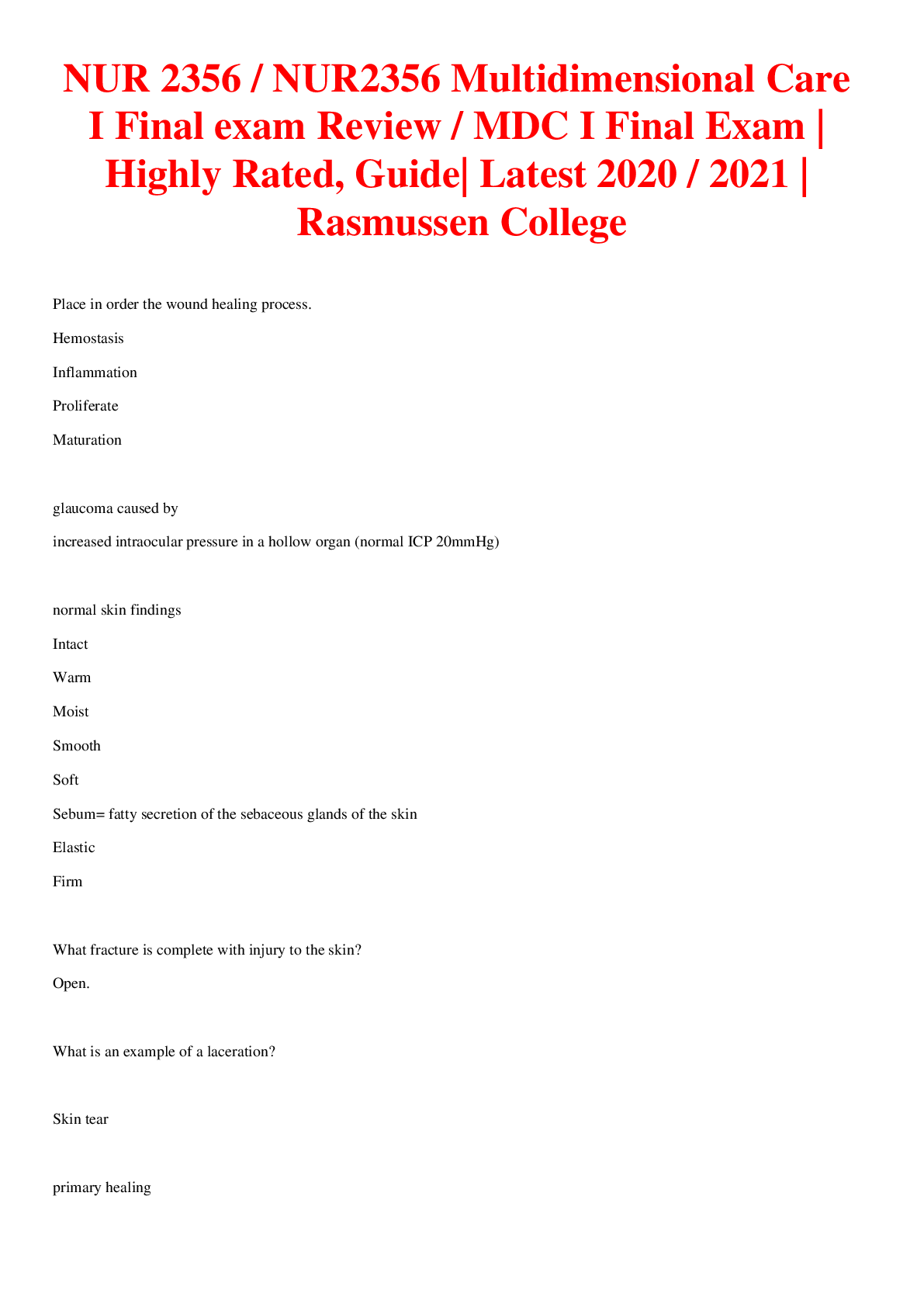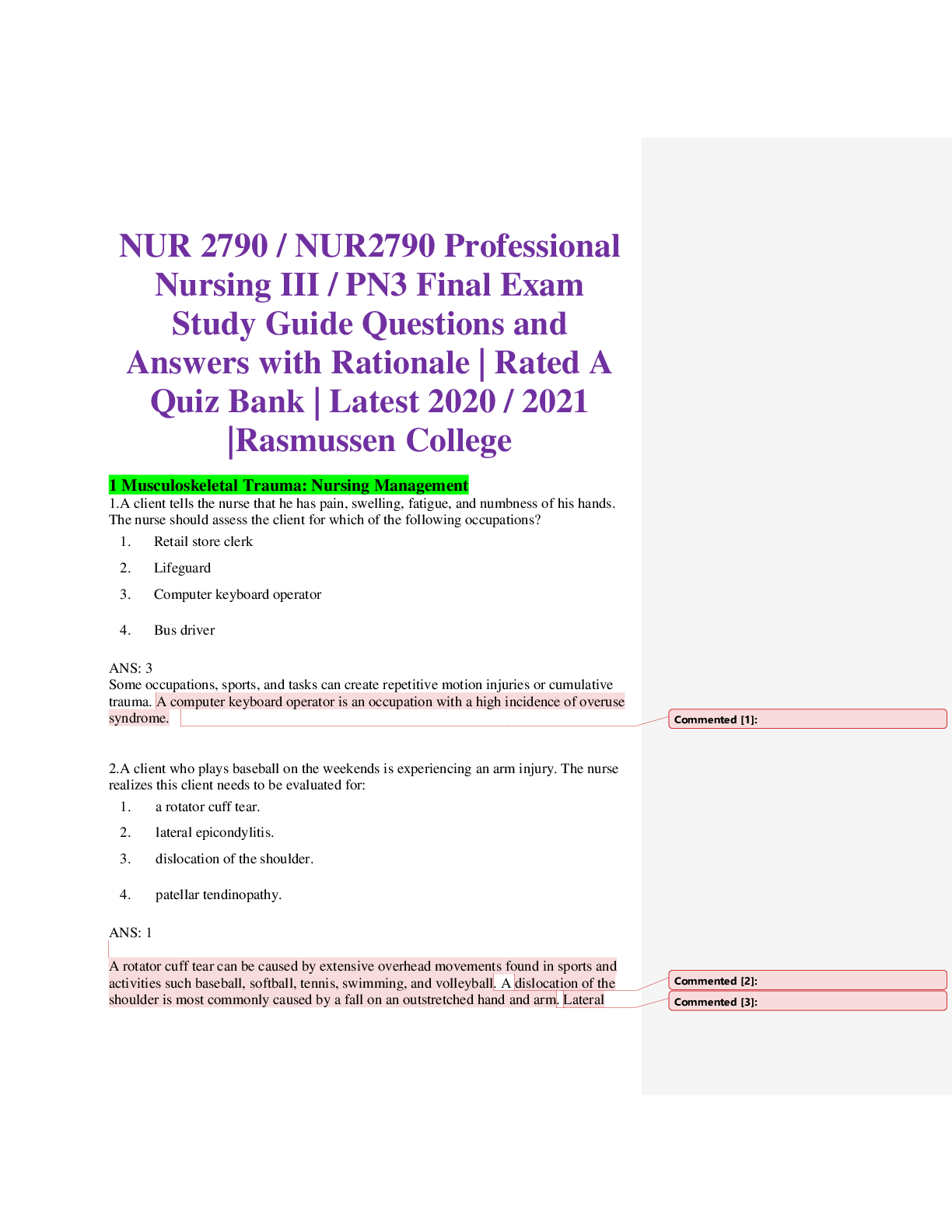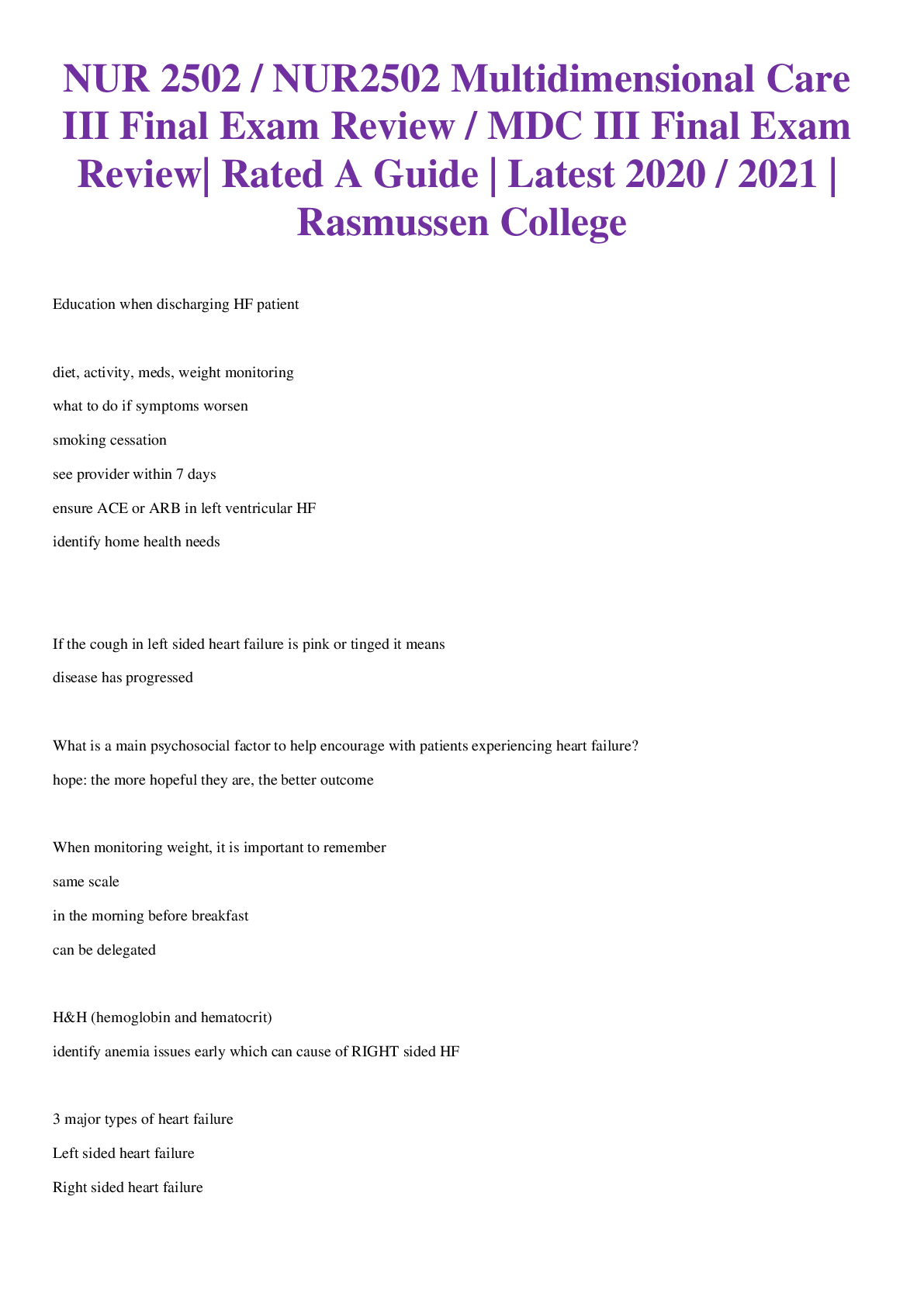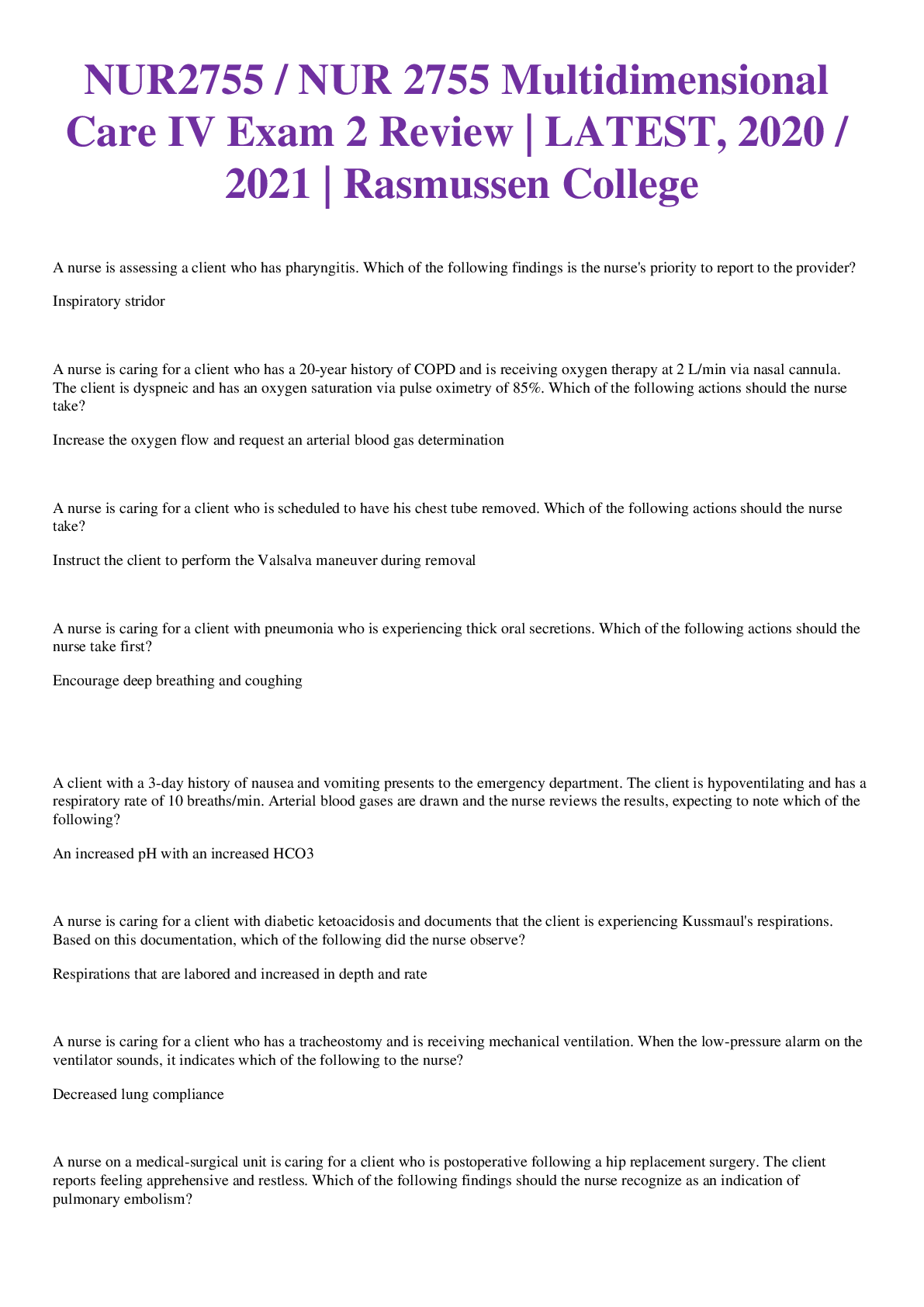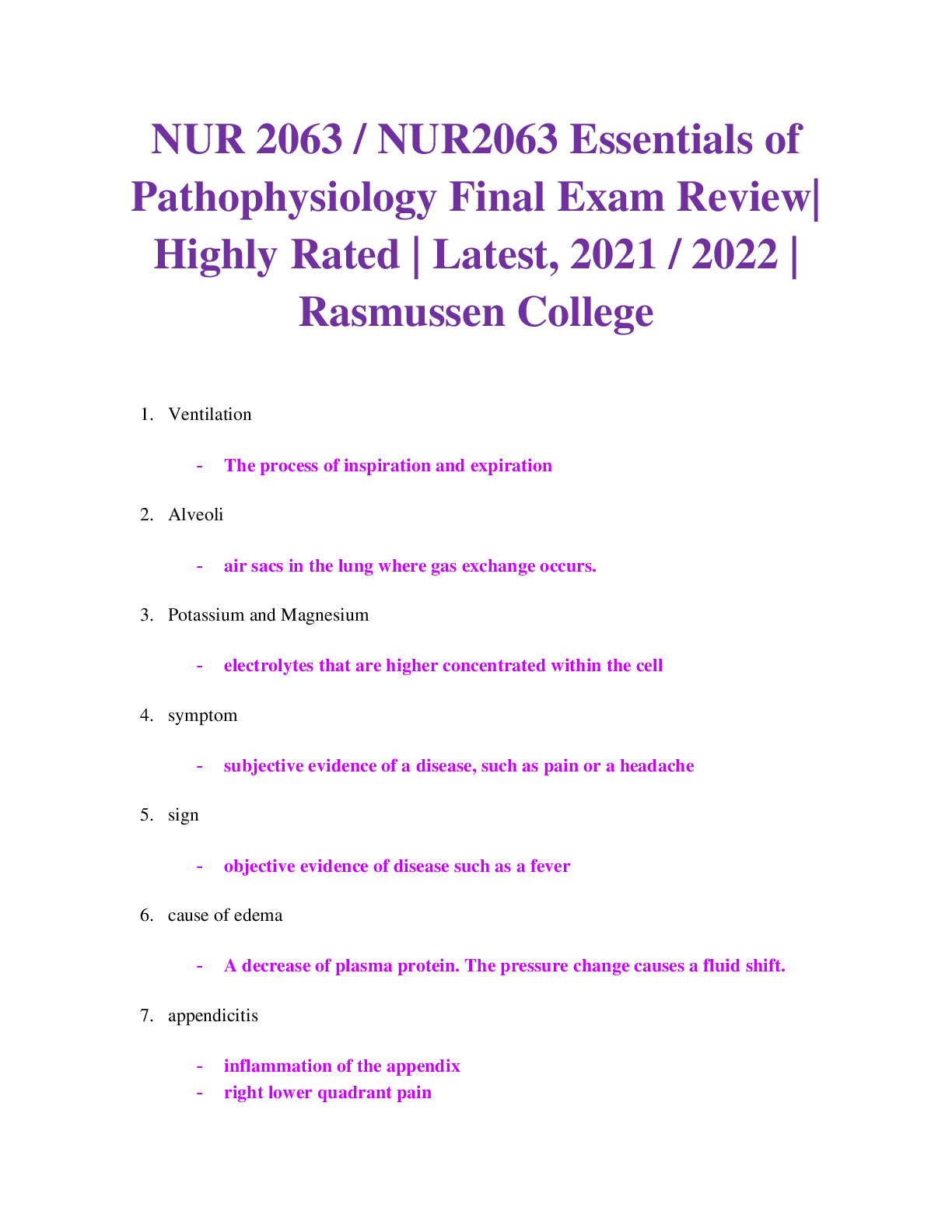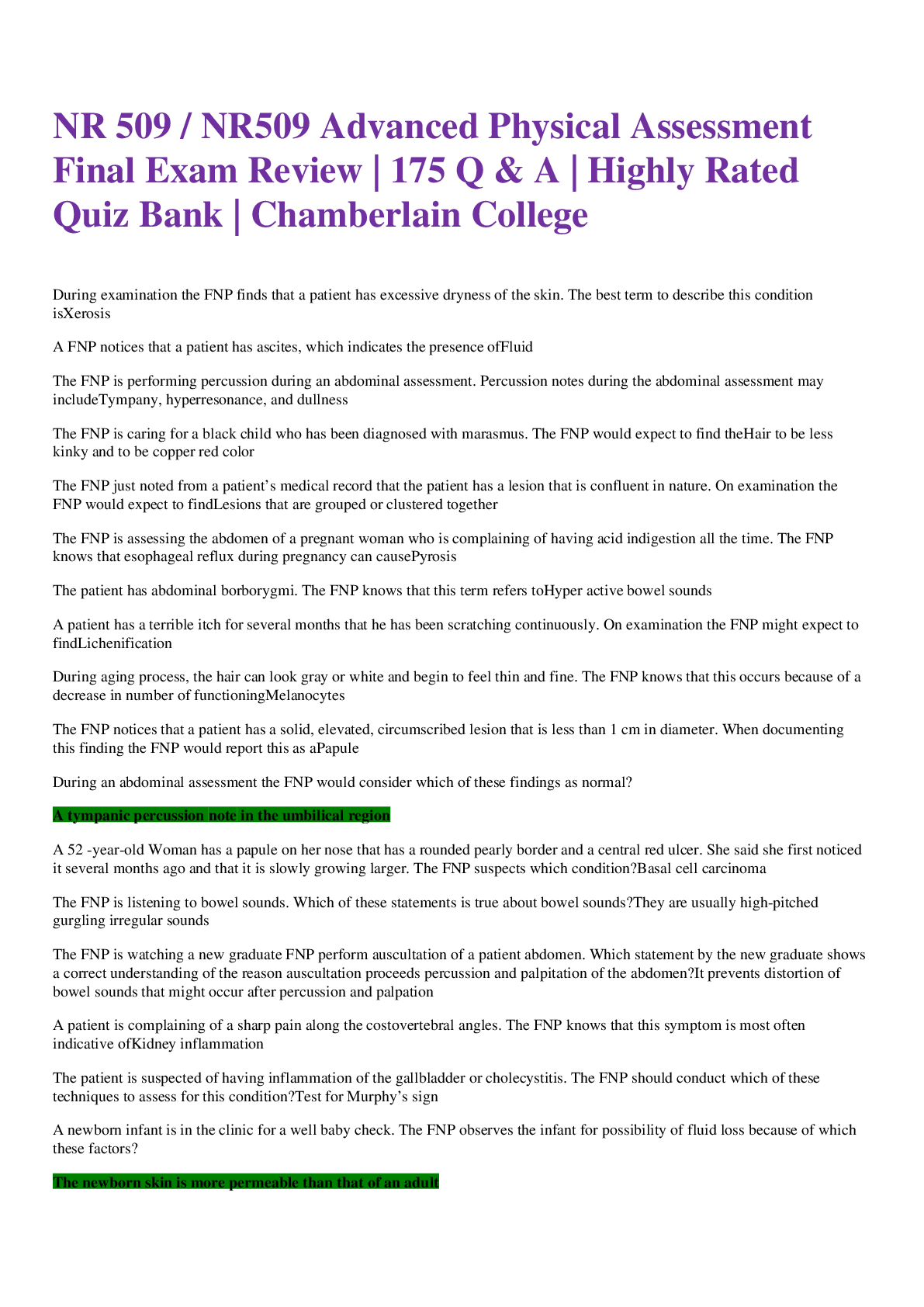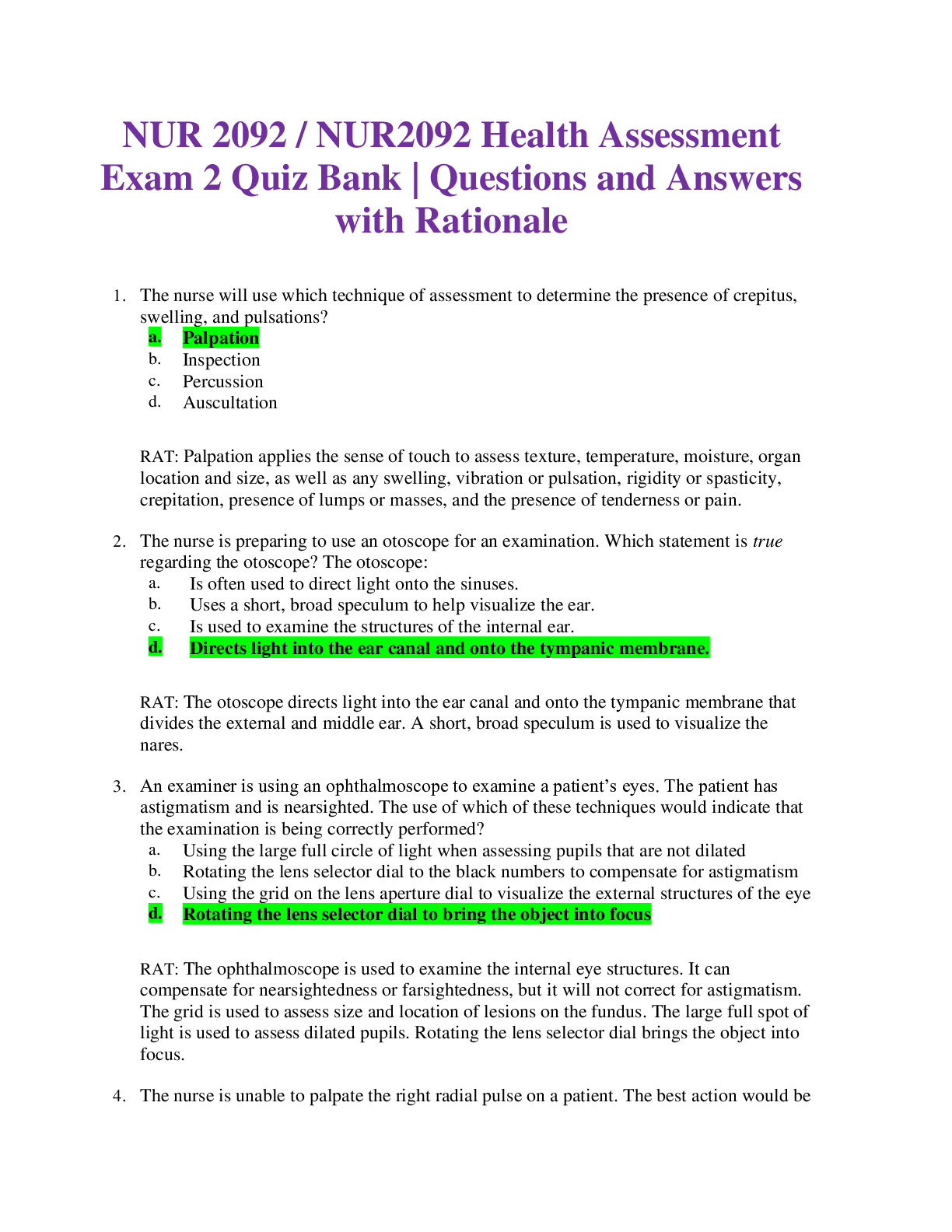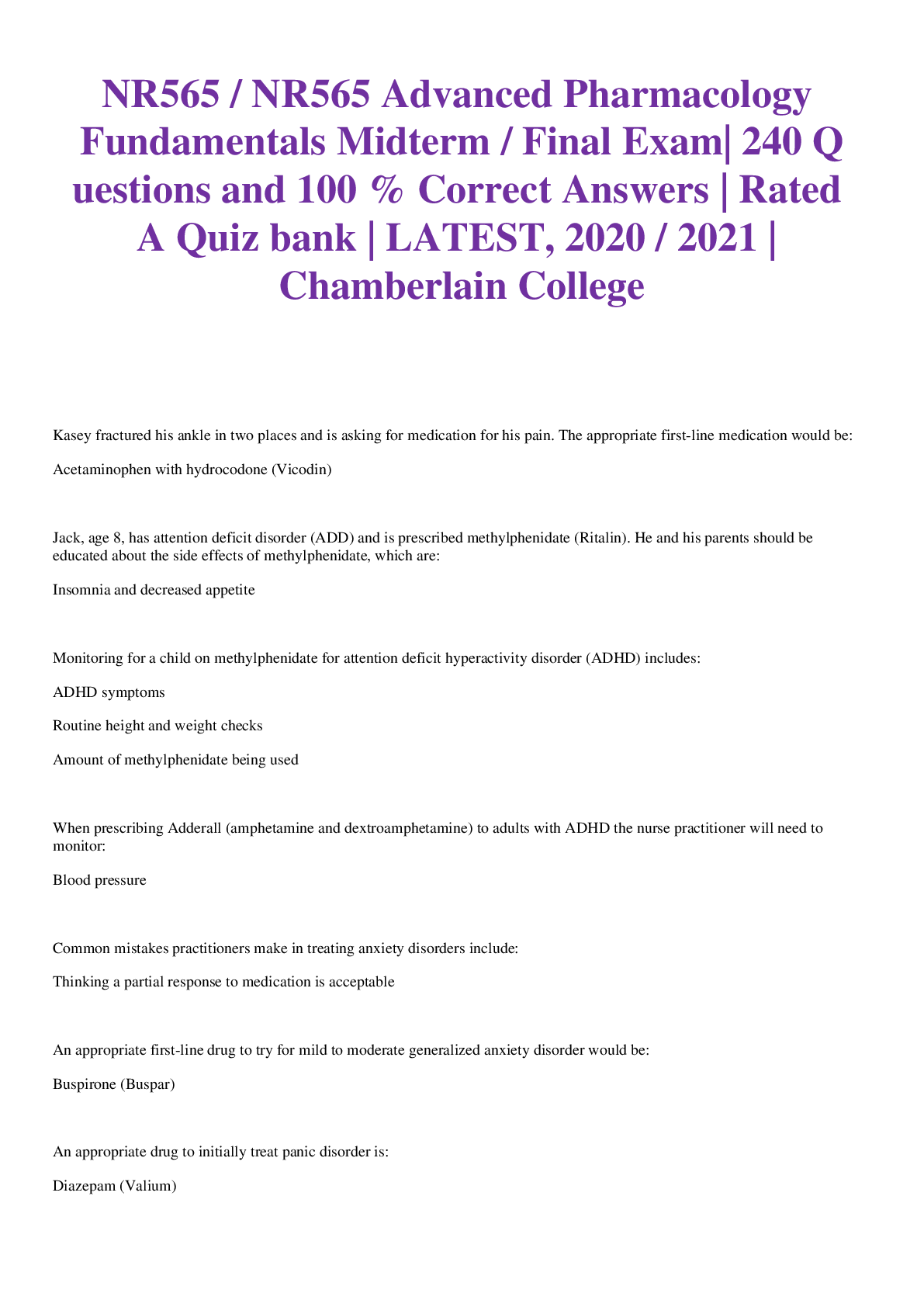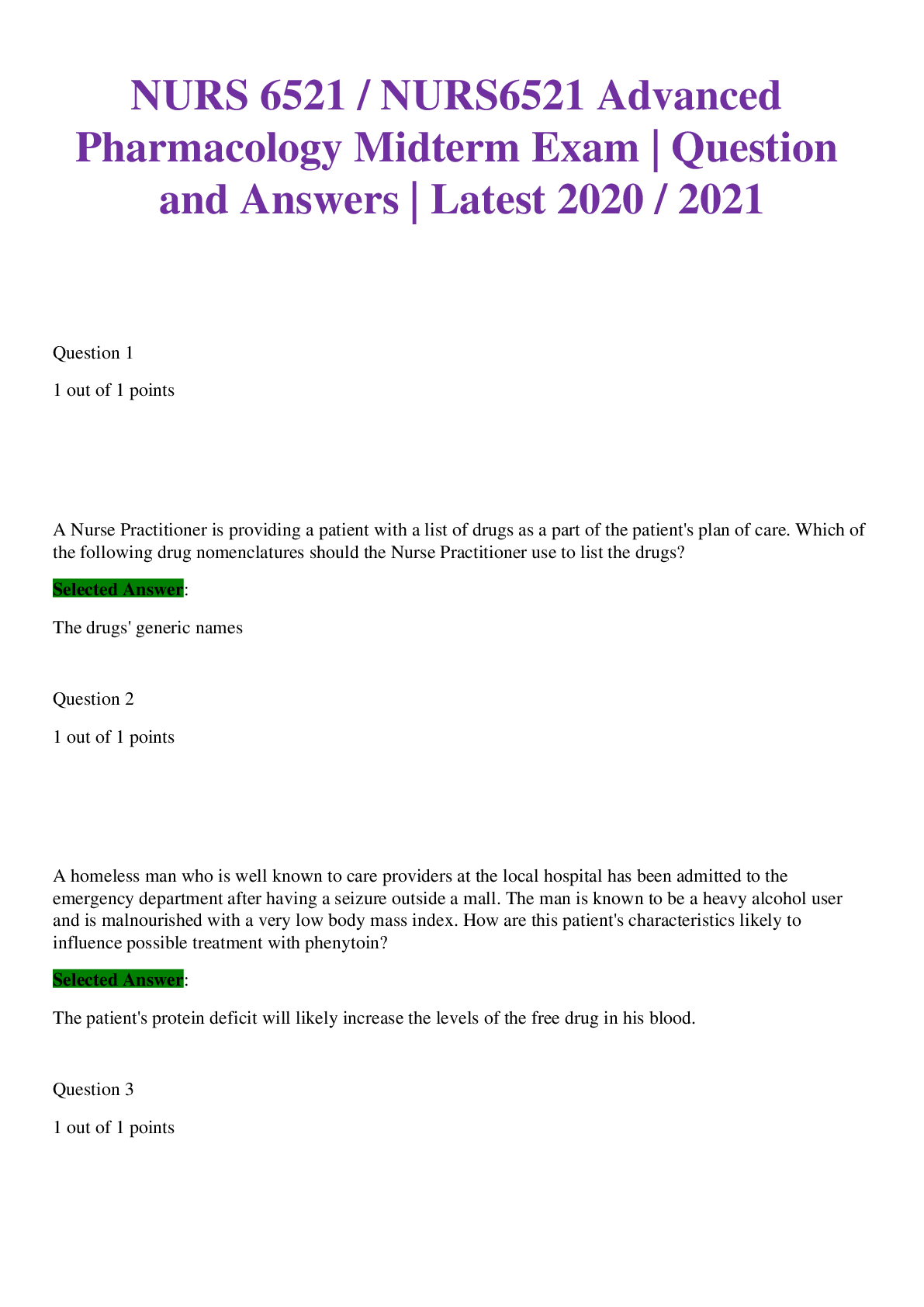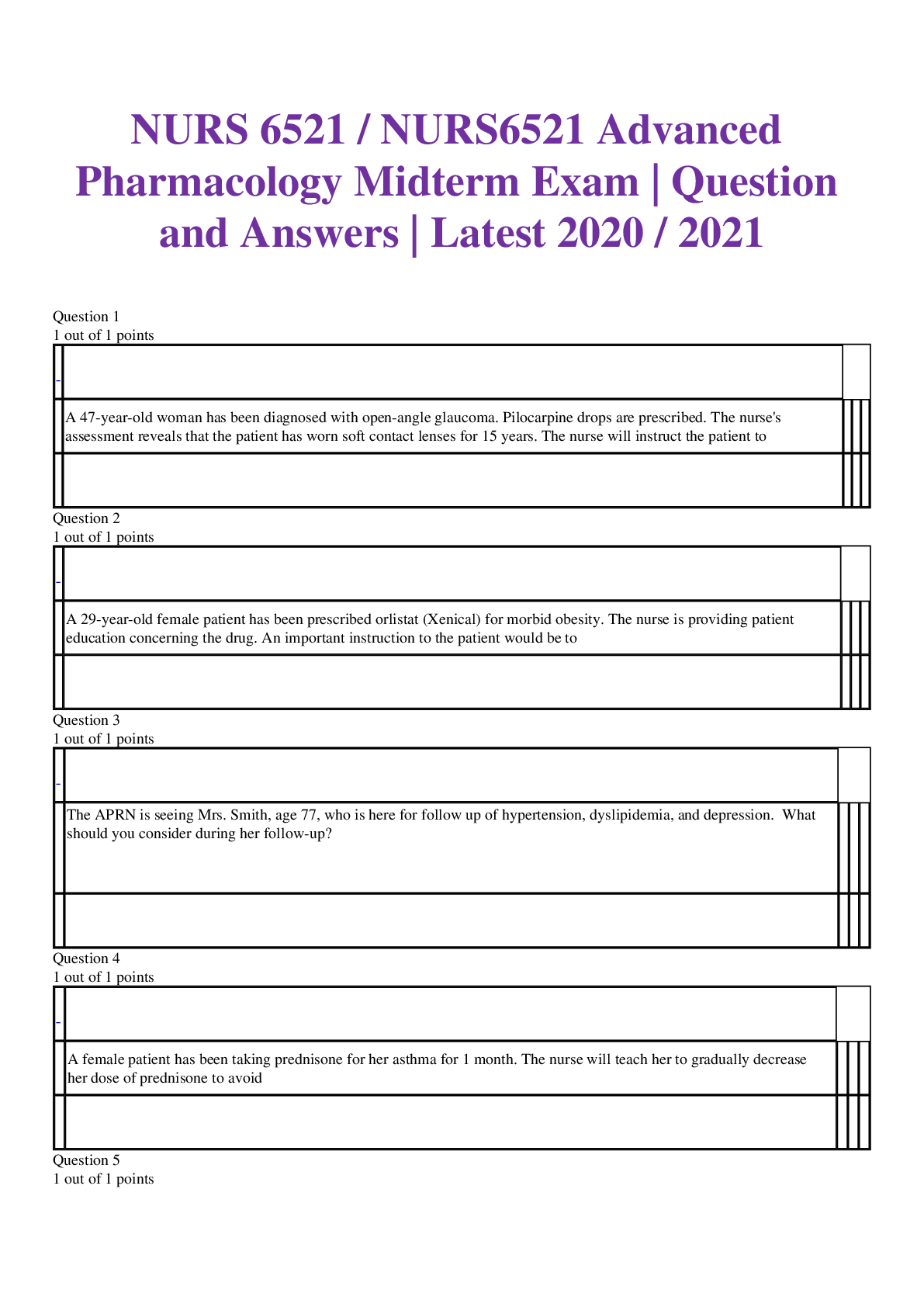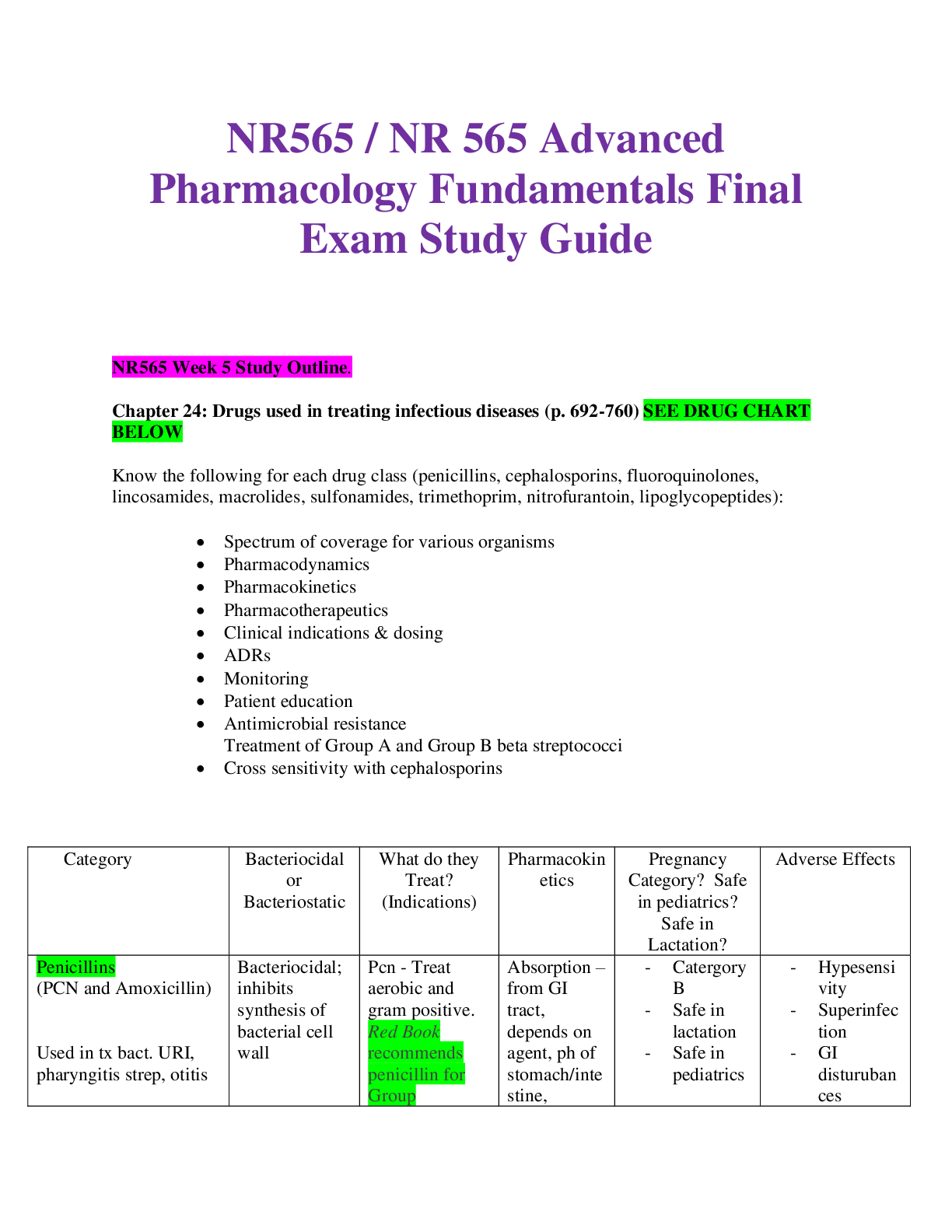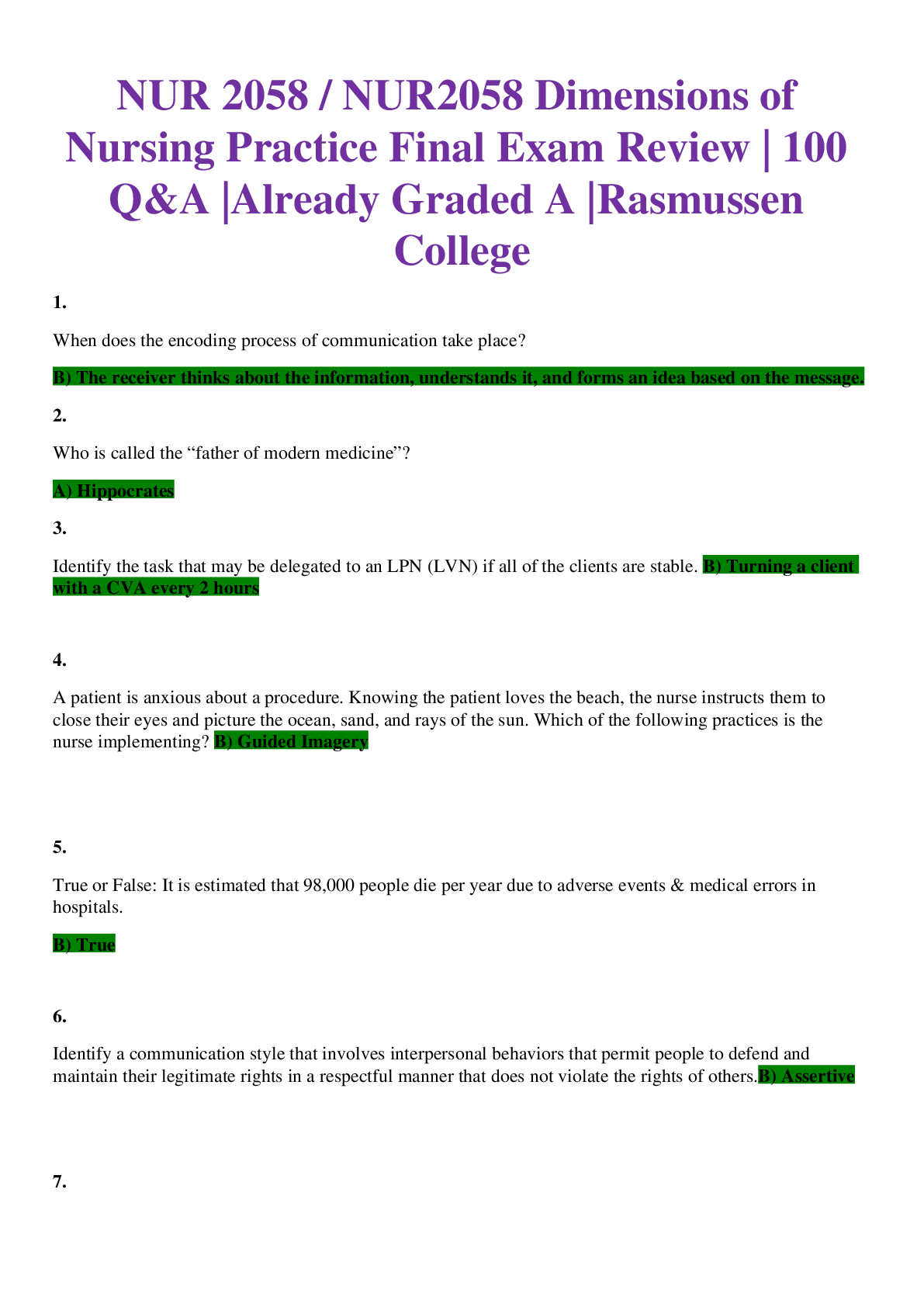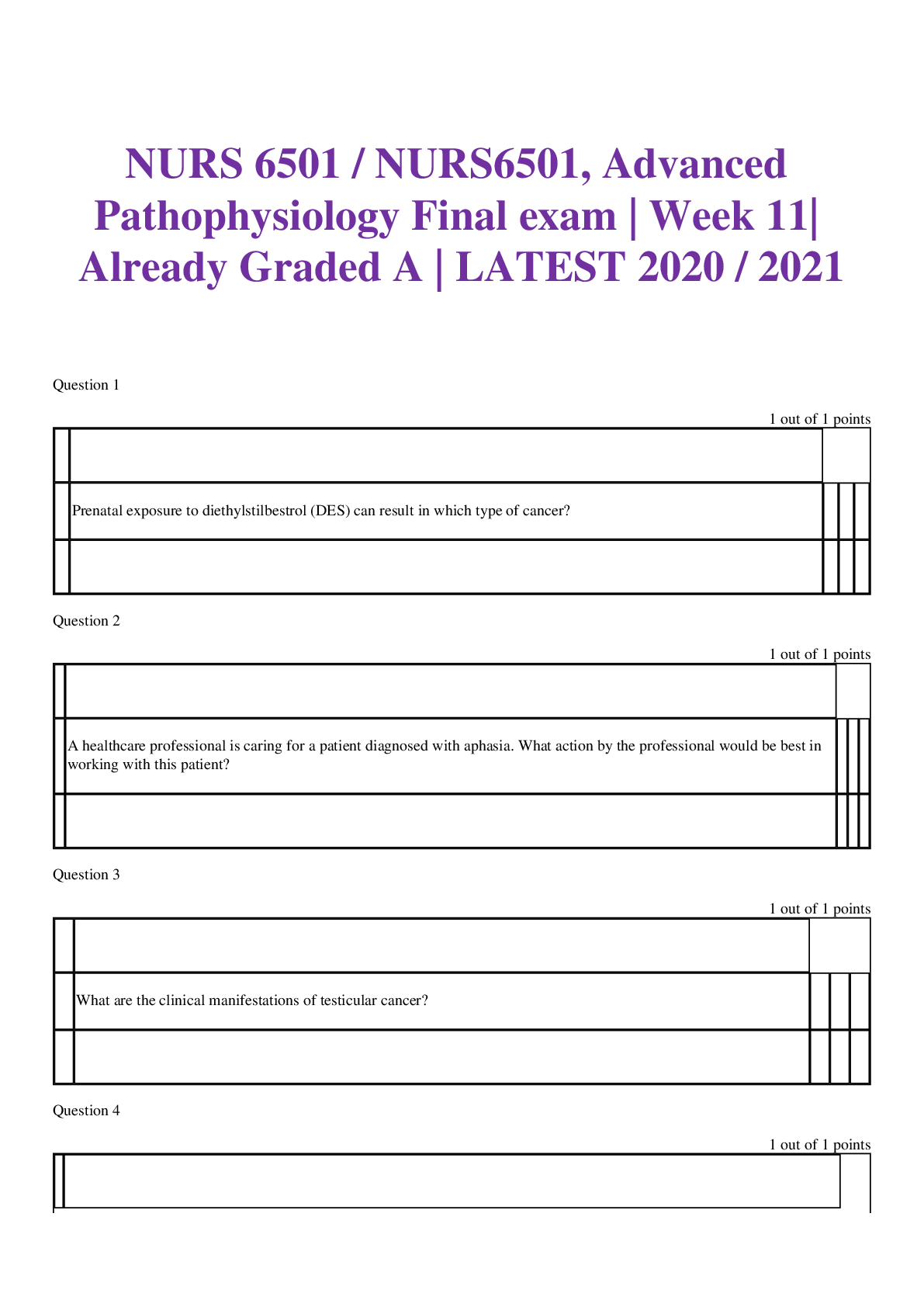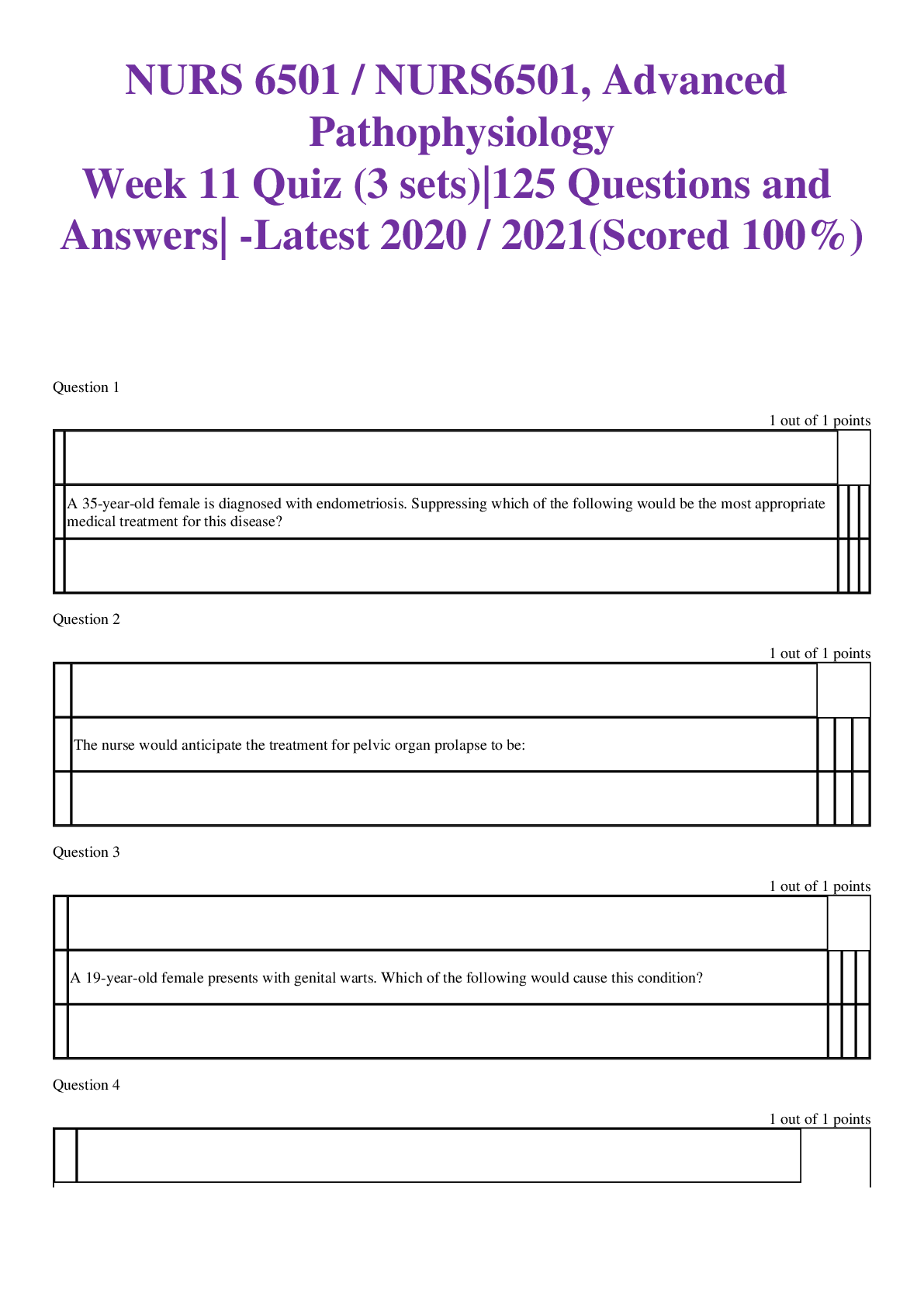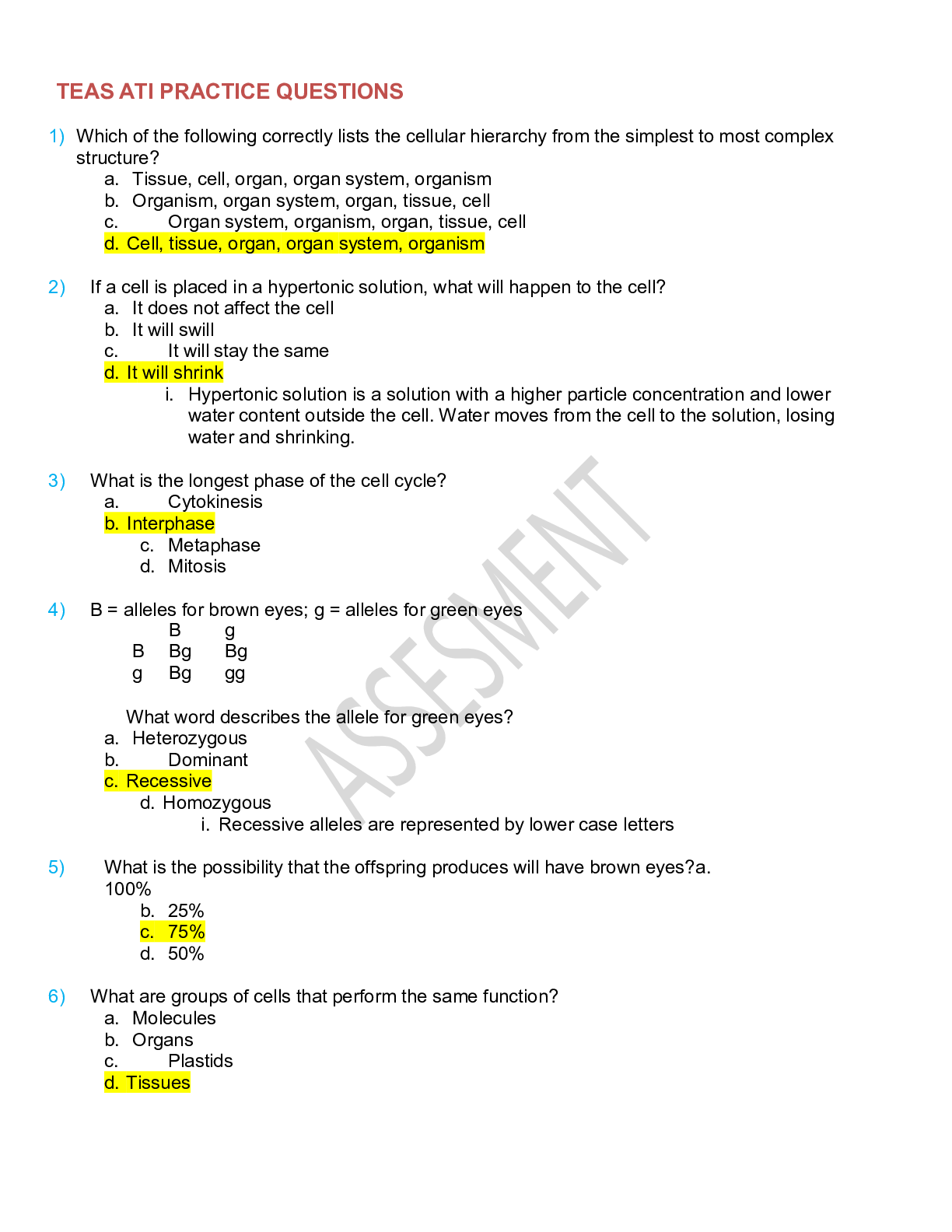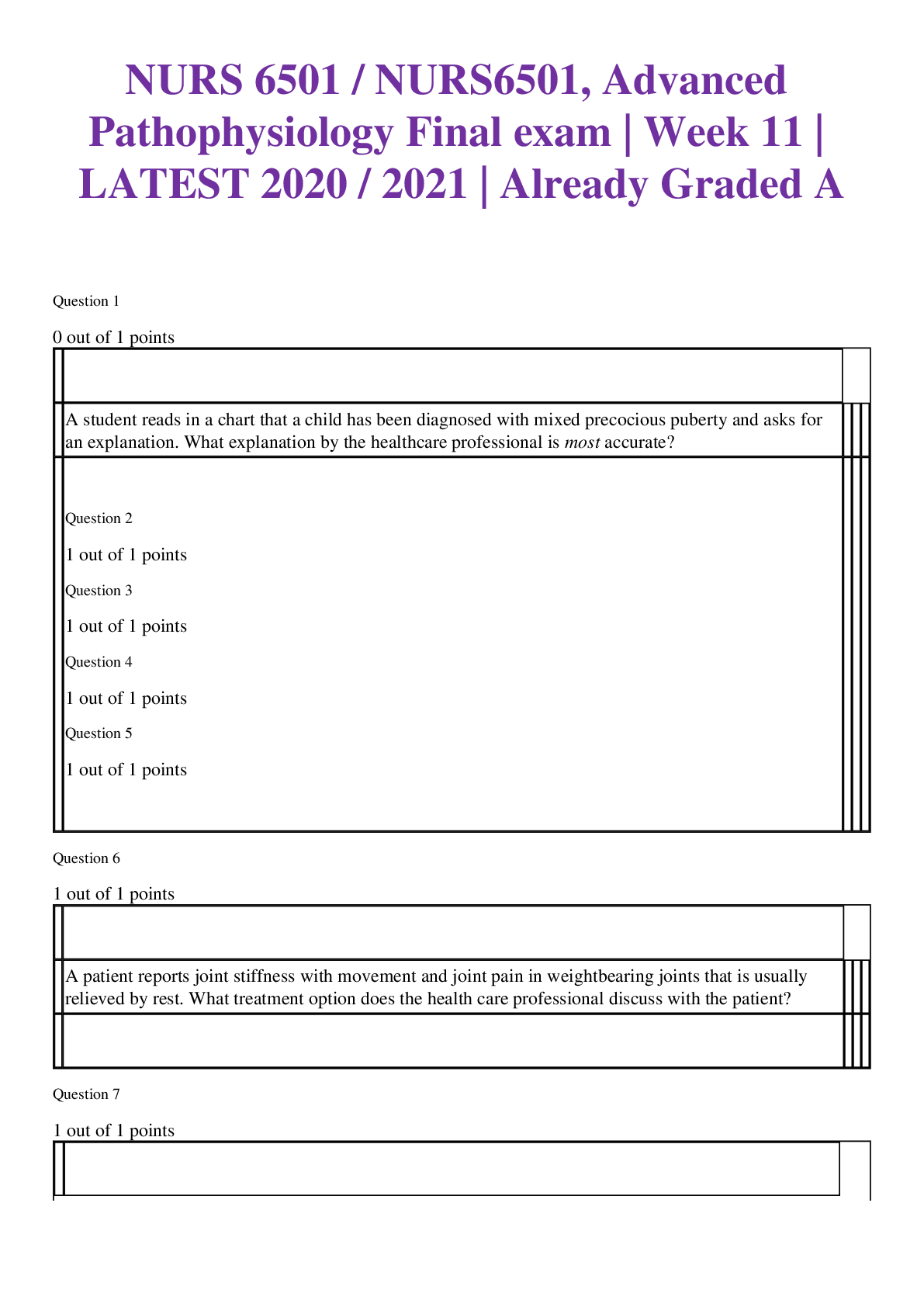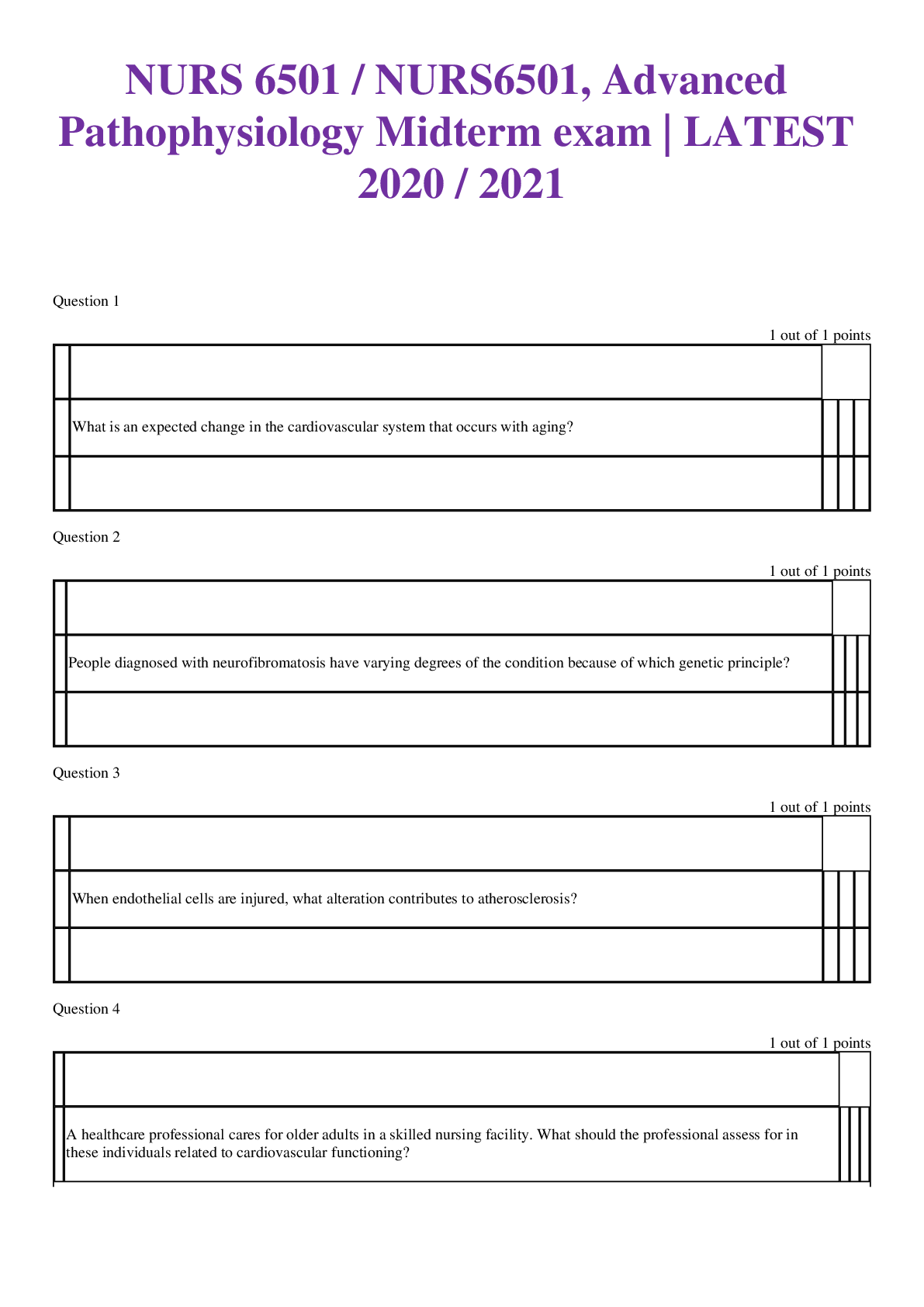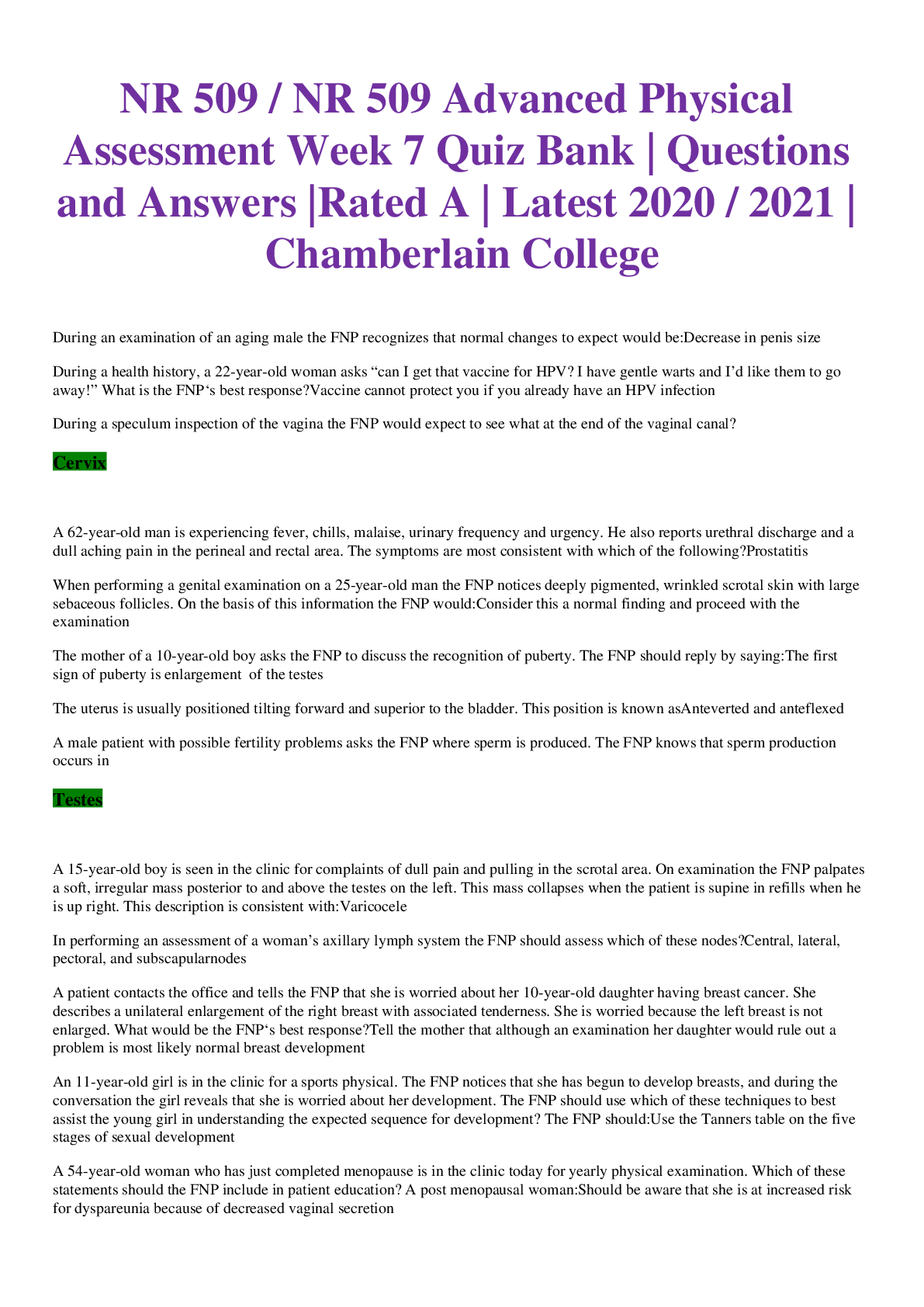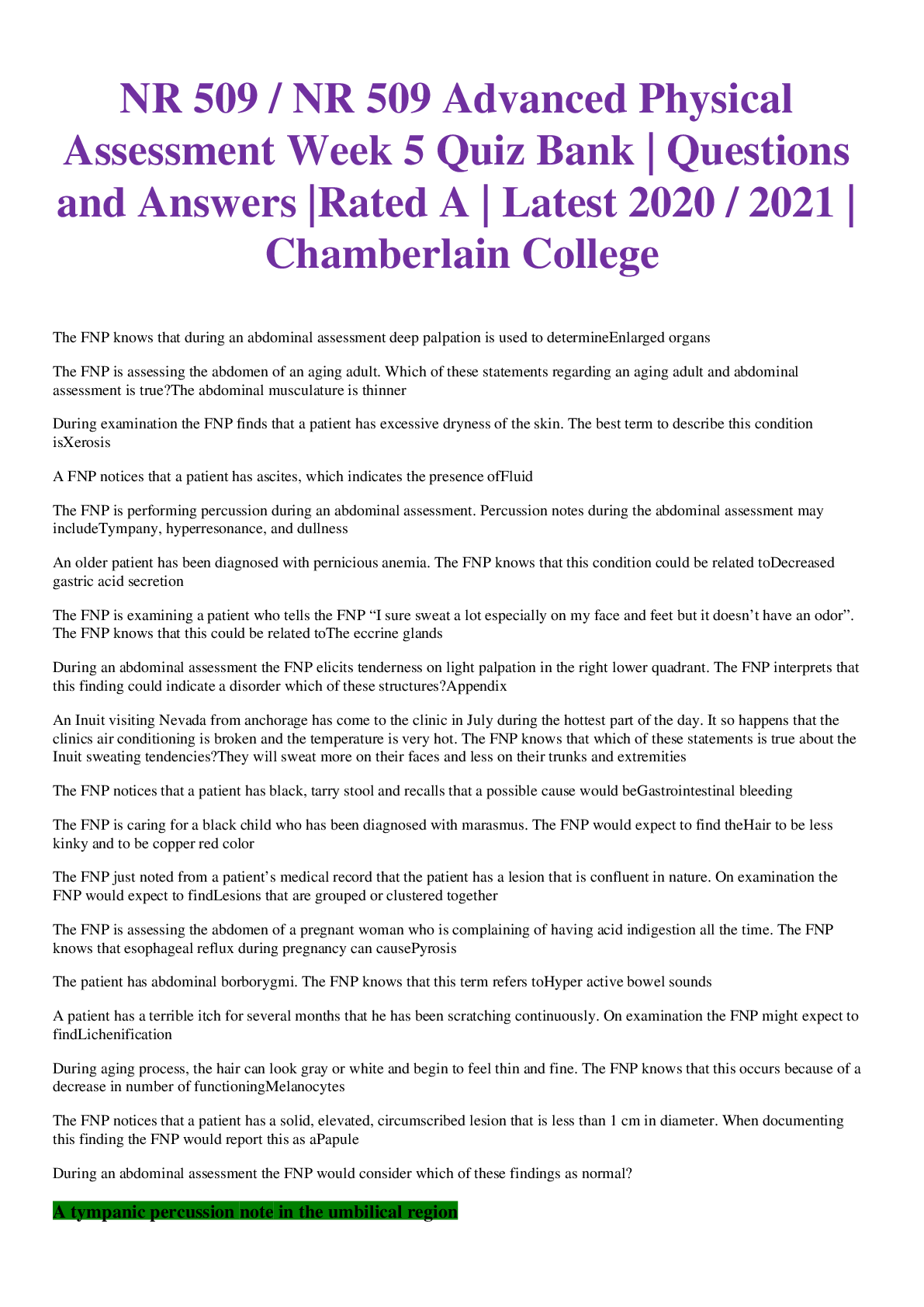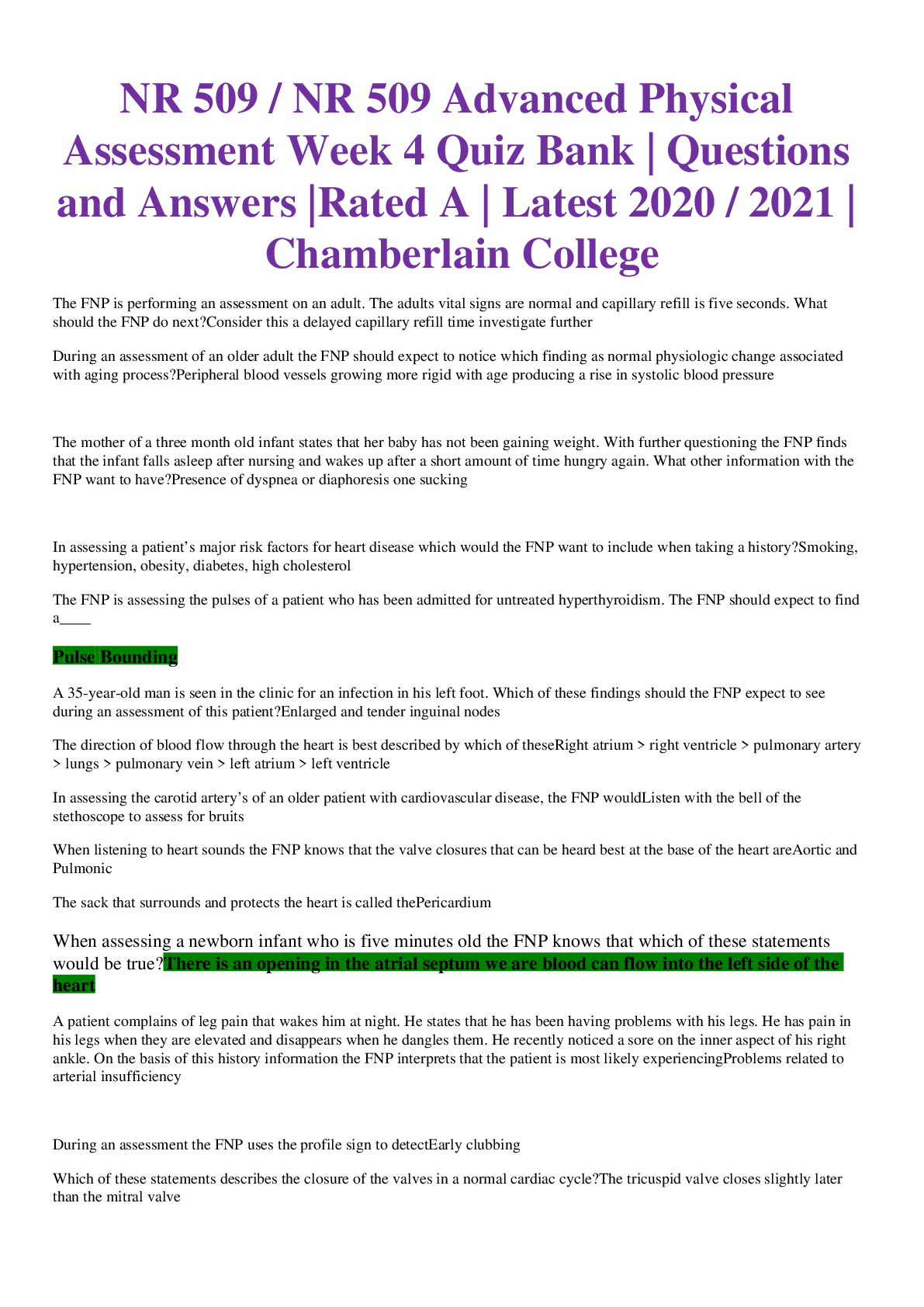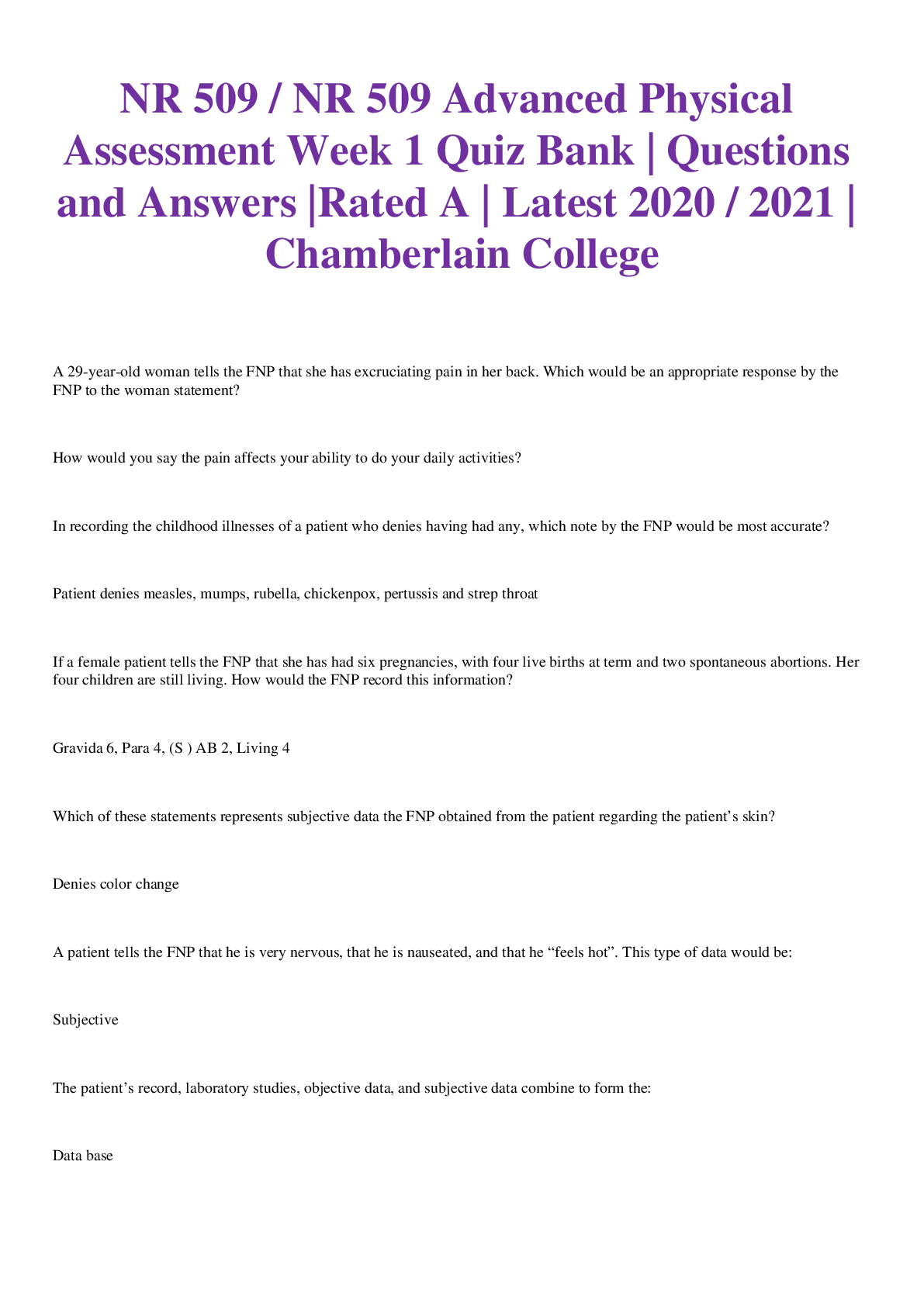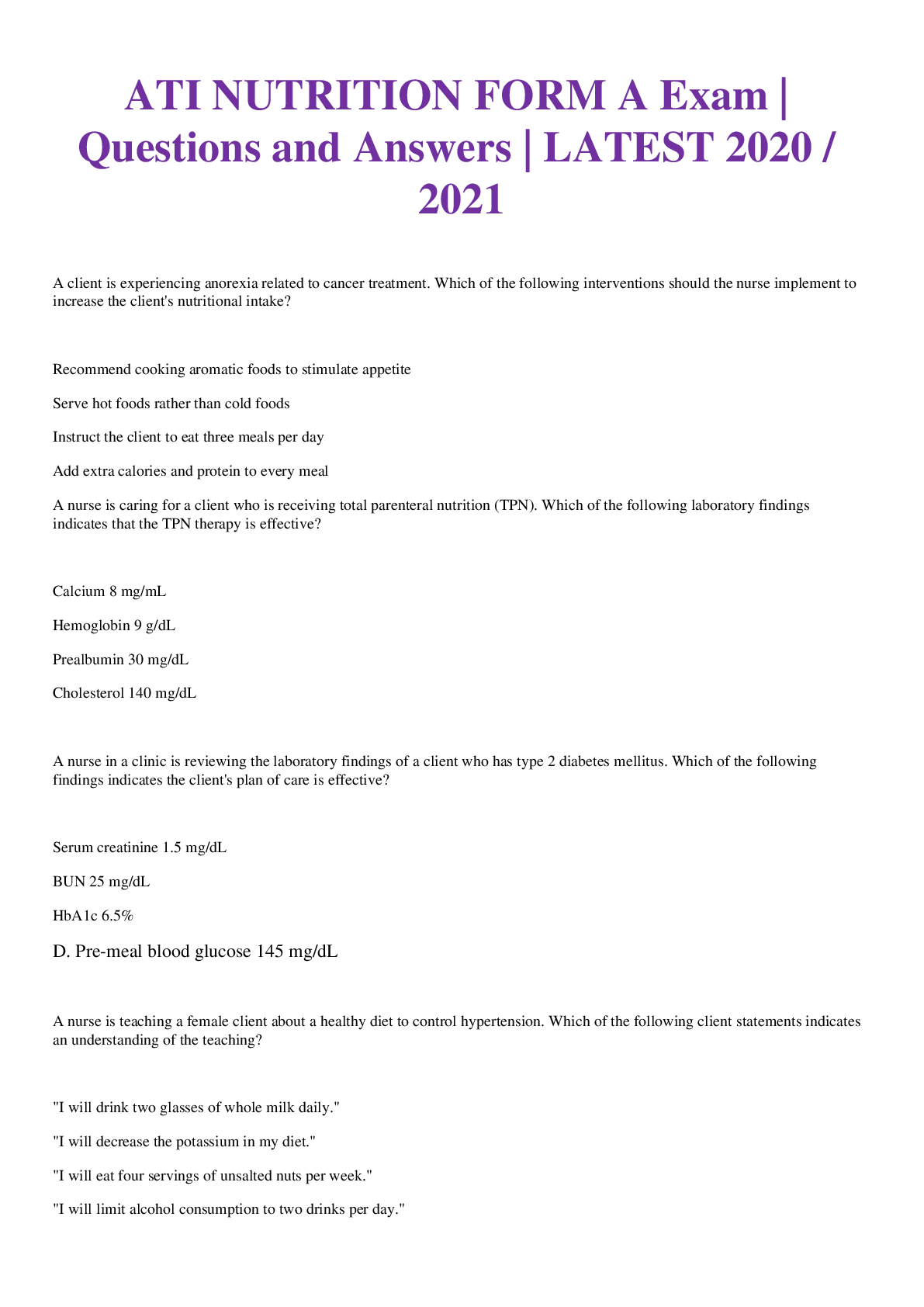*NURSING > EXAM > NRNP 6566 / NRNP6566 Advanced Care of Adults in Acute Settings I Week 6 Knowledge Check | Questions (All)
NRNP 6566 / NRNP6566 Advanced Care of Adults in Acute Settings I Week 6 Knowledge Check | Questions and Verified Answers | Latest 2020 / 2021
Document Content and Description Below
NRNP 6566 / NRNP6566 Advanced Care of Adults in Acute Settings I Week 6 Knowledge Check | Questions and Verified Answers | Latest 2020 / 2021 • Question 1 For the following ABGs, identify ... the level of hypoxemia, the primary acid base disorder, and the type of compensation. Example - acute respiratory acidosis with metabolic alkalosis and severe hypoxemia ABG Result pH pCO2 pO2 HCO3 7.08 54 54 15 Correct Answer: Acute respiratory and metabolic acidosis with moderate hypoxemia Measure Normal Value Current ABG interpretation pH 7.35 – 7.45 7.08 pCO2 35 – 45 mm Hg 54 P02 80 – 100 mm Hg 54 HCO3 22 – 26 mEq/L 15 • Question 2 A 66 year old male is diagnosed with COPD. His current medications include hydrochlorothiazide 25 mg po daily, lisinopril 20 mg po daily, and Crestor 10 mg po daily. The APRN has ordered salbutamol 4 mg po TID. What side effects may occur? Correct Answer: Tachycardia and palpitations may occur due to the stimulation of the beta2-adrenergic receptors. Older patients with higher doses of beta2-agonists may experience an exaggerated somatic tremor. Hypokalemia is possible especially when beta2-agonists are combined with thiazide diuretics. Oxygen consumption may be increased in rising conditions in patients with chronic heart failure those these effects can decrease over time. Hypertension, hypotension, angina, and arrhythmia are possible as well. • Question 3 A 62 year old patient with COPD is hypoxic and SOB. He is currently on BiPAP with the order reading 12/5 100% Rate 12. Explain what each number in the BIPAP order means. Describe what BIPAP is and when it can and cannot be utilized Correct Answer: • 12 is the initial inspiratory positive airway pressure (IPAP) • 5 is the initial expiratory positive airway pressure (EPAP) • These rates can be increased by 2-5 cm H20 • Rate of 12 breaths per minute • FIO2 initially set at 100% (can be titrated down) Noninvasive positive pressure ventilation (NIPPV) refers to the delivery of positive pressure ventilator support without the insertion of an endotracheal tube. This intervention works to improve lung volumes and decrease the work of breathing. NIPPV can be considered in Type 1 Respiratory failure which is when the patient cannot oxygenate such as pulmonary edema. Also in Type 2 Respiratory failure which is when a patient cannot ventilate such as in COPD. Do not use it in patients that are apneic, hemodynamically unstable, or with excessive secretions. Endotracheal intubation would be indicated if the patient becomes acidotic (pH<7.25), respiratory rate greater than 30, shock, refractory hypoxemia, vomiting, or declining mental status. [Show More]
Last updated: 1 month ago
Preview 1 out of 4 pages

Reviews( 0 )
Document information
Connected school, study & course
About the document
Uploaded On
Dec 22, 2020
Number of pages
4
Written in
Additional information
This document has been written for:
Uploaded
Dec 22, 2020
Downloads
0
Views
65

